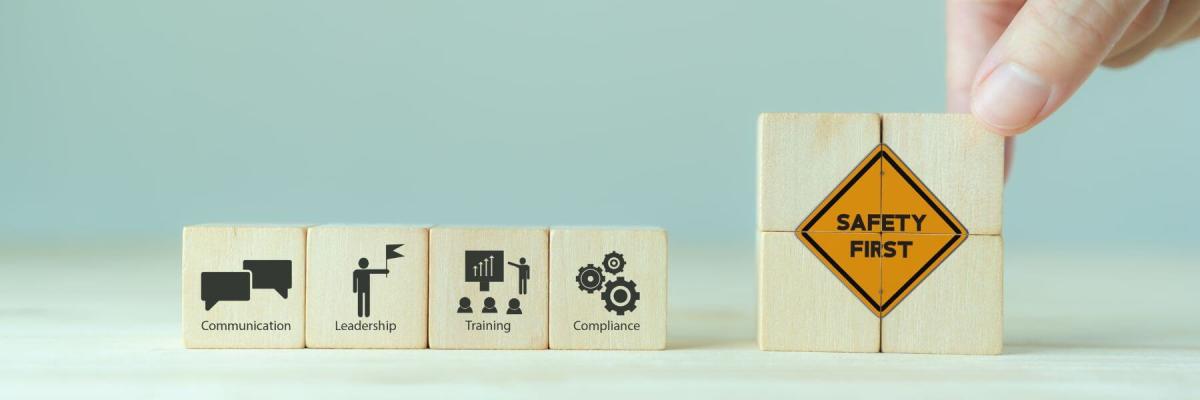
Workplace safety has always been--and always will be--a significant part of the professional world. However, it never hurts to find fresh, inspiring new ways to prioritize this critical element. Here's how to revitalize your workplace safety strategy in 2024.
New Year, New Workplace Safety Approach
When workers get too familiar with a task or rule, they may start to approach it on autopilot. Whether this is overconfidence, lack of focus, or just an attempt to make the workflow a little smoother, the results can be potentially disastrous.
The same is true for workplace safety itself. If you follow the same old routine, your teams may think they know all the details already and stop giving you their full attention. However, many elements--such as certain trainings--have to follow preset guidelines to meet OSHA regulations and other requirements. That means some of your workplace safety has to be repetitive by definition.
So how do you strike that balance? How do you keep workers fully engaged in topics, trainings, and content they may have seen dozens of times before?
The key is to refresh your underlying approach to workplace safety with tips like these:
#1: Bring Workers Into The Conversation.
No element of workplace safety can be discussed without at least mentioning your people. They're always part of the conversation--so why not bring them into it? Letting employees have a voice in your workplace safety approach can help boost engagement and give them feel more responsible for upholding their own rules. Encourage them to think of this as an opportunity to protect themselves and their coworkers by developing better habits.
#2: Develop A Culture of Constant Safety.
Workplace safety isn't just a list of rules--it's a culture. For example, a company that doesn't prioritize workplace safety still has a safety culture; it just happens to be a bad one.
Don't let this be you. Instead, work with everyone in your business to develop a culture that encourages safety of all kinds. That means going beyond the handouts and OSHA requirements to fully engage with workplace safety like mental and emotional health, teamwork, on-the-job trust, and more.
#3: Make Safety Training More Engaging.
Workplace safety training courses don't have to be "one-size-fits-all." Instead, they can take different forms and formats depending on your needs, industry, and more. For example, some topics can be trained either in-person or online, allowing you and your teams to decide what works best.
This is a big deal--not just because it's more convenient for you, but because it allows you to connect with workers who have different learning styles. When everyone can engage with content in ways that make sense to them, they're more likely to bring their full attention to the table.
#4: View New Tools As New Opportunities.
Whenever you bring a new tool into your workplace, take the opportunity to explain its role in your workplace safety approach. Is it meant to make day-to-day tasks easier and therefore safer? Does it introduce risks of its own? How can your team come together to anticipate and overcome potential challenges posed by this tool? By approaching equipment in this way, you encourage employees to think critically about workplace safety instead of passively accepting changes to their work environment.
#5: Try Emergency Drills.
Emergency drills can feel like an interruption--but if you explain their importance ahead of time, workers are more likely to see these drills as a chance to practice workplace safety. You can also make this into a sort of challenge. Keep track of time spent vs. mistakes made and see how your teams improve with every drill, encouraging them to do a little better every time--and meet all the necessary requirements, too.
#6: Refresh Your Approach.
Your current approach might be working just fine, in which case a total overhaul likely isn't necessary. Instead, hold onto what's working and build new ideas, topics, or strategies around that success. This keeps things interesting for your workers and helps you integrate new approaches as workplace safety culture and risk recognition continue to evolve.
Conclusion
Workplace safety must follow certain rules and regulations, but that doesn't mean it has to be the same old thing every time. With the right tips, you can refresh your workplace safety approach in the new year and give your workers a new way to think about this incredibly important element of their day-to-day lives.
Need help revitalizing your workplace safety strategy? Contact us today to learn about the tips, tricks, and training courses that will be most relevant in 2023.
